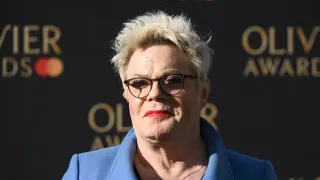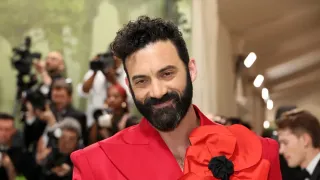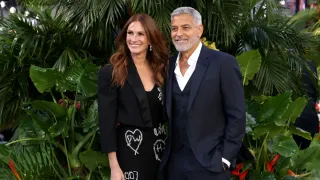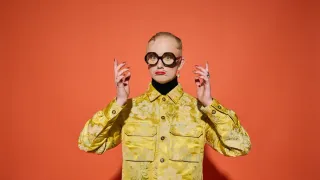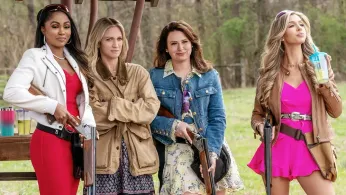
7 hours ago
Netflix’s ‘The Hunting Wives’ Delivers Dark Intrigue and Queer Representation to the Texas Suburbs
READ TIME: 3 MIN.
Netflix’s new series, ‘The Hunting Wives,’ which premiered on July 21, 2025, brings the glossy intrigue of domestic thrillers to the heart of Texas, centering on Sophie O’Neil (Brittany Snow), a Massachusetts transplant trying to find her place among the elite socialite scene in Maple Brook, Texas. Based on May Cobb’s acclaimed novel, the show mixes murder mystery with sharp social commentary, offering a provocative look at the secrets and shifting loyalties within a privileged community .
Sophie’s life begins to unravel when she is drawn into the orbit of Margo Banks (Malin Akerman), the charismatic leader of the so-called Hunting Wives—a clique that thrives on skeet shooting, wild parties, and dangerous games of seduction. Margo’s unapologetic openness about her sexuality and her “open marriage” to oil tycoon Jed Banks quickly disrupts Sophie’s carefully maintained boundaries, setting off a chain of events that culminates in murder and betrayal .
‘The Hunting Wives’ distinguishes itself with its frank depiction of sexuality and desire among women. Margo, portrayed with electric charisma by Malin Akerman, is at the center of multiple romantic and sexual entanglements—most notably with Callie (Jaime Ray Newman), the sheriff’s wife and Margo’s closest confidante. The show normalizes queer relationships, presenting them as both integral to the plot and authentic to the characters’ experiences, rather than mere subtext or sensationalism .
The nuanced dynamic between Margo, Callie, and Sophie reflects a broader trend in recent television, where LGBTQ+ relationships are treated with complexity, agency, and emotional depth. Margo’s fluid approach to love and attraction—“we just sleep with any women we fancy,” she tells Sophie—pushes against the conservative backdrop of Maple Brook, highlighting the tensions LGBTQ+ people often experience in less accepting communities .
While the series is first and foremost a twisty thriller—complete with jealousy, obsessions, and a shocking murder plot—it also serves as a meditation on the risks faced by those who live outside the norms of their environment. As the investigation into a young woman’s death unfolds, Sophie's newfound liberation puts her under suspicion, exposing how quickly difference can become a liability .
The show further complicates the narrative by revealing that deeply closeted or repressed desires can have explosive consequences. When Jill, the reverend’s wife, is unmasked as the murderer—motivated by her own fears, secrets, and need to control her son’s sexuality—the story offers a commentary on the dangers of internalized shame and societal pressure. The series ultimately underscores that LGBTQ+ people, especially those living in conservative settings, often navigate complex webs of risk, concealment, and resilience .
Since its release, ‘The Hunting Wives’ has generated significant buzz, particularly for its representation of queer women in multifaceted, leading roles. Critics have praised the series for its “neon-bright eroticism” and the way it refuses to pigeonhole its characters into stereotypes, instead allowing them space to be messy, vulnerable, and powerful .
For LGBTQ+ viewers, the show’s willingness to place queer desire at the center of its narrative is a welcome shift from the usual tokenism found in the genre. By making space for the complexities of love, loyalty, and betrayal among women, ‘The Hunting Wives’ offers both representation and a mirror to the realities many queer people face—especially those forging community in unexpected places.
As conversations about inclusion and visibility continue in the media landscape, ‘The Hunting Wives’ stands out as a bold, entertaining, and thought-provoking entry—one that refuses to look away from the shadows lurking just beneath the surface of suburban perfection.
